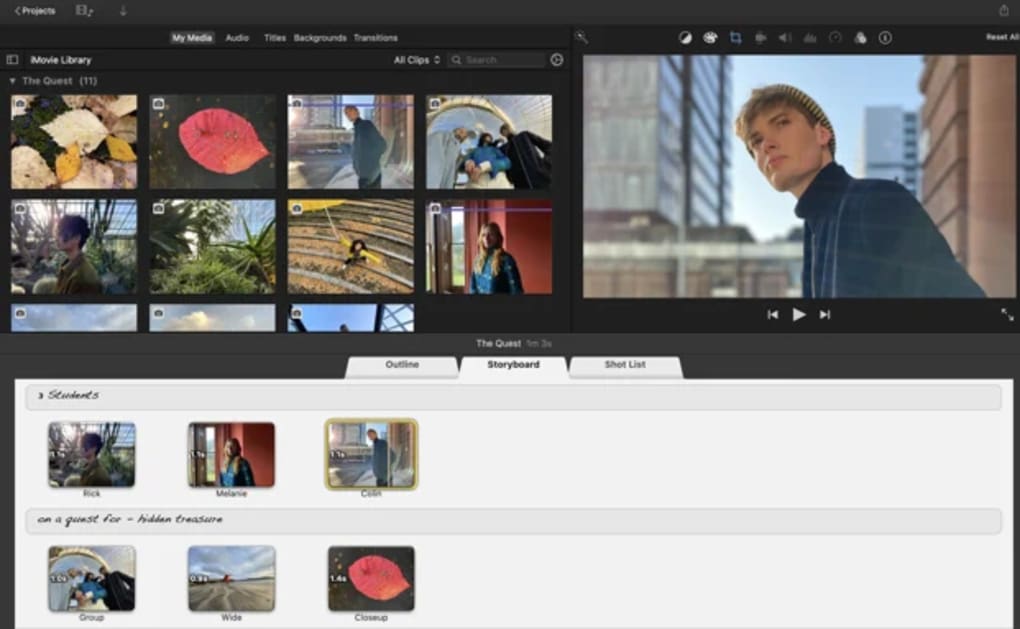If iMovie is hoarding storage on your iPhone or iPad, here are some safe ways to clean it up. Export projects to iCloud Normally when you export a project, iMovie creates just a video file to. Another way to trim down your iMovie library is by using the Space Saver feature. On iMovie, go to File Space Saver option. This will scan your library for video clips that you don’t use and reject them. And don’t forget to empty your Trash! Solution #2: Delete render files. One of the main hoarders of disk space is iMovie’s render files. Deleting the Render files seemed to do the most good; I’m back to 195GB for the iMovie Library. I also deleted all of my 2013 movie files directly from the iMovie Library instead of just the Project file. That helped a little. I think my next step should be to just transfer the entire iMovie Library to an external hard drive.
An iMovie library holds all the media and data used to make movies in iMovie. If your iMovie library is large and you want to free up storage space on your Mac, you can move your iMovie library to an external drive.

Before you move an iMovie library, it's a good idea to back up your Mac.
Moving your library to an external hard drive doesn’t affect any iMovie Theater content you have moved to iCloud.
Clean Out Imovie Library
Prepare your drive
You can store your library on an external storage device such as a USB Thunderbolt drive formatted as APFS or Mac OS Extended (Journaled). Apple doesn’t recommend storing iMovie libraries on external storage devices like SD cards and USB flash drives, or drives shared on a network.
You can’t store your library on an external drive or other disk used for Time Machine backups.
Move a library to an external storage device
- Quit iMovie.
- Select your external drive in the Finder, then choose File > Get Info.
- If the information in Sharing & Permissions isn’t visible, click the triangle , then make sure the 'Ignore ownership on this volume' checkbox is selected. If it's not selected, click the lock icon to unlock it, enter an administrator name and password, and then select the checkbox.
- Click your desktop to make sure that you’re in the Finder, then choose Go > Home from the menu bar at the top of your screen.
- Open the Movies folder, then drag the file named iMovie Library to your external hard drive.
- When the library file is finished copying to your external drive, double-click the library file on the external drive to open it in iMovie. If an alert appears asking you to give iMovie access to a removable volume, click OK.
If you clicked Don't Allow, in the Finder choose Apple menu > System Preferences, click Security and Privacy, then click Privacy. Click Files and Folders in the sidebar, then select 'Removable Volumes' under iMovie. - Make sure the library you moved contains all your media, then drag the original file from your Movies folder on your Mac to the Trash.



If you disconnect the external drive
How To Clean Imovie Library
Clear Imovie Library
When your external drive is connected to your Mac, the library you moved to the external drive opens automatically in iMovie. If you disconnect the external drive containing the library, iMovie opens to a new, empty library created in the Movies folder on your Mac. iMovie automatically saves any projects you create and media you import in the new library.
Clean Imovie Library
If you want to open the library you moved to an external drive, you can open it after you reconnect the external drive. You can then move clips, events, and projects between libraries.